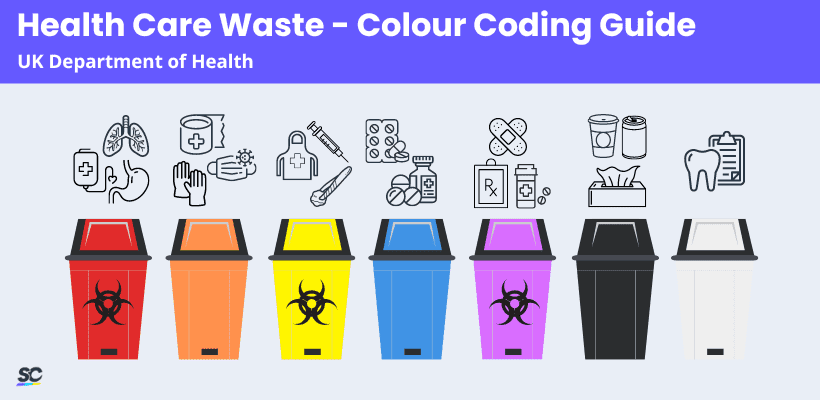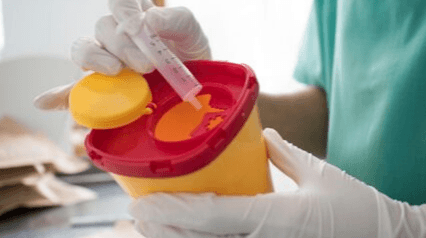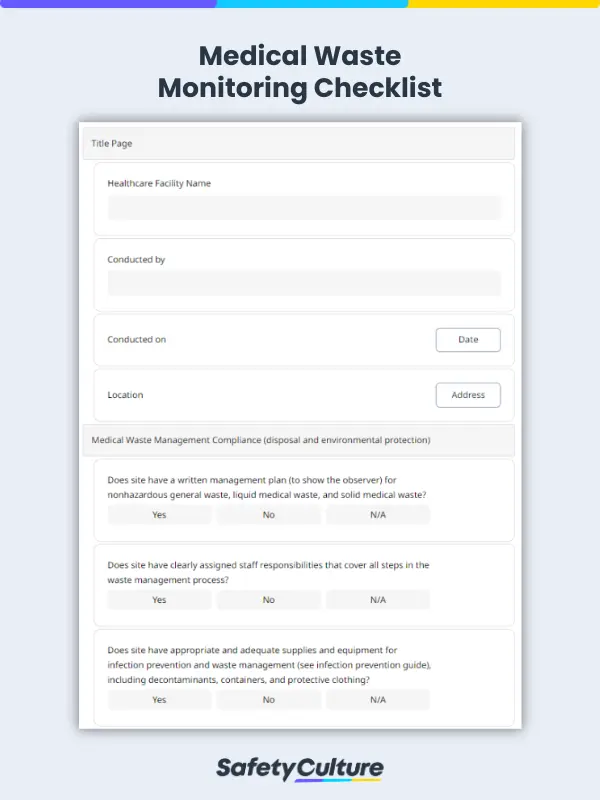What is Hospital Waste Management?
Hospital waste management is the systematic handling of waste generated by healthcare facilities to ensure safety, compliance, and environmental sustainability. Its key components include segregation, containment, collection and transportation, storage, and treatment and disposal.
Efficient waste management is critical for healthcare institutions because medical waste can be pathogenic and environmentally hazardous. Furthermore, non-compliance with proper hospital waste management can lead to serious health risks, fines, and damage to a healthcare institution’s reputation.
What Should a Hospital Waste Management Checklist Include?
A medical waste monitoring checklist should ideally specify and include the following information and ensure proper implementation of the following:
- Written management plan
- People responsible
- Appropriate equipment, materials, and supplies
- Waste management protocols
- Appropriate separation of wastes
- Proper collection and transportation of wastes
- Appropriate storage and disposal of wastes
Best Practices for Hospital Waste Management
Medical waste such as infectious items, chemicals, expired pharmaceuticals, radioactive items, and sharps (used needles, lancets, etc) are hazardous and, if not properly disposed or treated, can be lethal and a threat to the environment. To achieve safe and sustainable management of medical waste, consider these top 3 best practices:
Stay updated on regulations
There can be different regulations when it comes to medical waste. Be aware of these regulations and keep track of updates to help maintain the compliance of the medical staff and facility. Provide training and other resources to assist you in implementing proper waste management.
Color-code containers and waste bins
Hospital waste disposal involves the proper identification of the different types of medical waste and each type of medical waste requires a different disposal method. Segregating medical wastes based on their type helps ensure that each waste is discarded, transported, and destroyed properly. Waste bin color coding in hospitals help healthcare staff easily segregate waste and identify which waste goes to which container to help prevent issues arising from random or improper disposal.
The table below shows an example of the color-coding scheme for the types of medical waste from the UK’s Department of Health:

Health Care Waste – Colour Coding Guide
Red – anatomical (e.g. blood, organs)
Orange – clinical/infectious
Yellow – clinical/highly infectious
Blue – medicines (e.g. unused drugs)
Purple – cytotoxic and/or cytostatic products (e.g. chemotherapy medicines)
Black – municipal waste – ie. not clinical or medical waste
White – dental
Healthcare waste segregation is done ideally at the very first opportunity to avoid hazardous hospital waste from getting mixed with regular waste.
Monitor and look for opportunities for improvement
Measure the success of your waste management system with a monitoring tool that easily integrates into your workflow. Conduct regular inspections of your waste management process from segregation and collection to storage, transportation, and disposal. An example of a monitoring tool you could use are checklists. These are easy to use and they help get more things done in a shorter period of time. Monitoring checklists also help ensure that people get their daily, weekly, and monthly tasks done on time.
These are just some of the practices you can do to ensure proper medical waste management in your healthcare facility. According to the World Academy of Science, Engineering and Technology International Journal of Health and Medical Engineering, enforcing proper medical waste management benefits your healthcare facility in the following ways:
- It minimizes the spread of infections and reduces the risk of accidental injury to staff, patients, visitors, and the community.
- It reduces the likelihood of contamination of the soil or ground water with chemicals or micro-organisms.
- It attracts fewer insects and rodents and does not attract animals.
- It helps provide an aesthetically pleasing atmosphere.



